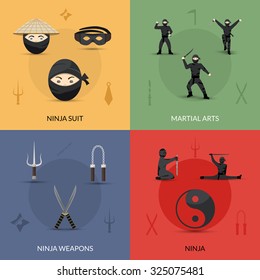Checking Out The Rich Heritage And Spiritual Capacities Of Martial Arts
Checking Out The Rich Heritage And Spiritual Capacities Of Martial Arts
Blog Article
Authored By-Barber Montoya
Step into the old world where martial arts were born out of necessity in diverse regions. Societies crafted unique combating styles linked with historic contexts. Strategies evolved over centuries via committed technique and social exchanges. Today, modern martial arts mix traditional aspects for maximum effectiveness. Philosophically, martial arts emphasize discipline, self-improvement, and harmony. Respect, humility, and equilibrium are fundamental principles assisting experts towards growth and durability. Discover the midsts of this rich background and approach to discover the extensive impacts forming this long-lasting discipline.
Origins of Fighting Style
Fighting style came from various regions worldwide, advancing as sensible battle systems to prevent risks. These ancient fighting styles were developed out of necessity, with each society crafting strategies matched to their unique settings and difficulties. From the grappling arts of Jujutsu in Japan to the striking strategies of Kung Fu in China, martial arts were deeply linked with the historic, social, and social fabric of their respective societies.
In Japan, the samurai course polished martial arts like Kenjutsu, the art of the sword, which later on evolved into the extra promoted type of Kendo. At the same time, in Brazil, Capoeira emerged as a mix of dance and combat, produced by enslaved Africans as a way to withstand oppression. Each martial art carries with it an abundant history and viewpoint, mirroring the worths and beliefs of individuals who exercised them.
As you look into the beginnings of martial arts, you reveal a tapestry of human ingenuity, durability, and the unrelenting spirit of warriors throughout time.
Development of Techniques
With centuries of technique and improvement, combat methods within numerous martial arts have actually gone through an extensive advancement. From ancient designs like Kung Fu and Martial arts to much more modern-day disciplines such as Brazilian Jiu-Jitsu and Krav Maga, the advancement of methods has been driven by a combination of cultural influences, useful applications, and technical improvements.
One significant aspect of this advancement is the cross-pollination of methods between different martial arts. As an example, strategies from standard Japanese Jiu-Jitsu were incorporated into the production of Judo by Jigoro Kano in the late 19th century. https://www.rollingstone.com/culture/culture-features/martial-arts-silicon-valley-zuckerberg-musk-1234792801/ blending of designs has led to the growth of crossbreed martial arts like Mixed Martial Arts (MIXED MARTIAL ARTS), which integrate elements of striking, grappling, and submission strategies.
Furthermore, https://women-knife-self-defense08642.ttblogs.com/9808419/equipping-personal-defense-the-art-of-self-defense-reflexes-and-understanding-enhancement-via-training of techniques has been shaped by the raising focus on performance and efficiency in battle. Professionals have actually continuously sought to fine-tune their strategies with strenuous training, trial and error, and competitors, leading to the development of extremely specialized and reliable battling designs. Overall, the development of techniques in martial arts mirrors the vibrant nature of fight and the recurring pursuit for improvement and innovation.
Philosophical Foundations
Discovering the underlying thoughtful concepts of martial arts supplies understanding into their core values and guiding beliefs. At the heart of lots of martial arts self-controls is the principle of discipline itself. By educating your body and mind to act as one cohesive system, you cultivate self-control that expands beyond the dojo or fitness center right into daily life. This technique includes respect, humility, and self-control, forming not just your physical capacities but likewise your character.
An additional essential thoughtful structure in martial arts is the concept of constant self-improvement. The journey of understanding a fighting style is endless, with practitioners constantly aiming to much better themselves, both literally and emotionally. This concentrate on growth fosters strength, determination, and a development frame of mind that can be related to all aspects of life.
Additionally, martial arts highlight the importance of harmony and equilibrium. Techniques are made to make use of a challenger's power versus them, highlighting the principle of generating and redirecting pressure instead of meeting it head-on. This approach includes social relationships, promoting calm resolutions and mutual understanding. By welcoming these philosophical foundations, martial artists not only boost their fight skills however also grow a way of living centered on personal growth, regard, and harmony.
Conclusion
Finally, the history and ideology of martial arts use a rich tapestry of custom, discipline, and self-improvement.
Take for instance the story of Bruce Lee, that reinvented martial arts by mixing various designs and ideologies to develop his own special type of Jeet Kune Do.
Via commitment and technology, martial artists continue to press borders and inspire others to reach their complete capacity both in battle and in life.
